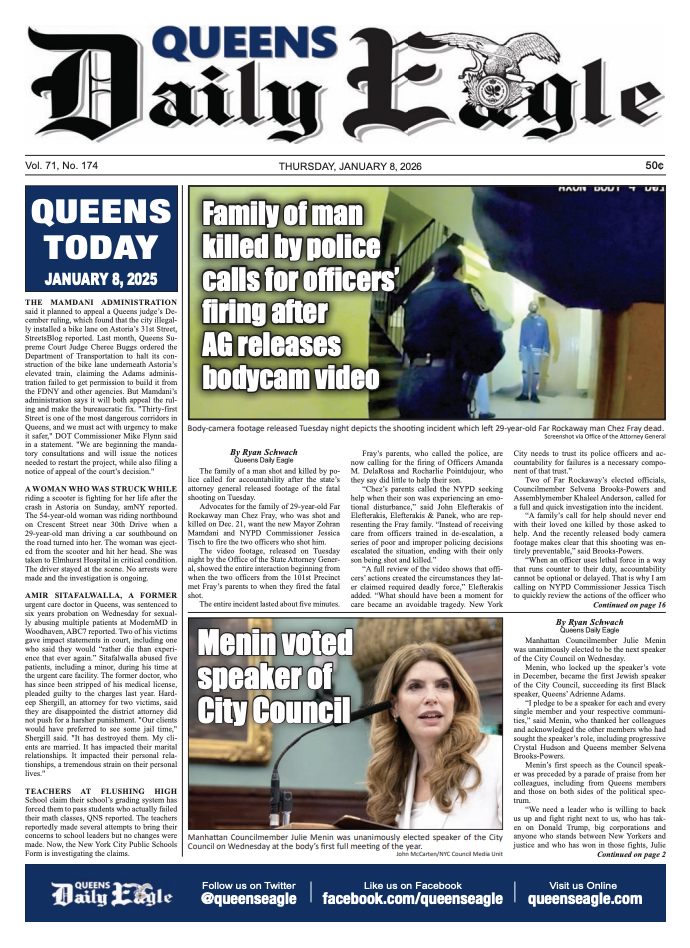Here's what you need to know about the massive Belmont Project's scale
/The proposed arena would be located along the Cross Island Parkway and Hempstead Turnpike, near the Queens border. Rendering via the New York Islanders.
By Naeisha Rose
Gov. Andrew Cuomo announced last month that he would agree to introduce full-time service at the Long Island Rail Road station in Elmont to facilitate the development of a new hockey arena and shopping mall next to Belmont Park racetrack.
Full-time service at the now-seasonal station would address the traffic concerns of the communities surrounding the development sites, Cuomo and project advocates said.
"We will provide millions of visitors and fans a fast and affordable way to get there and continue New York's nation-leading investments in 21st-century transportation infrastructure," Cuomo said in a statement.
The existing Belmont Park Station operates from late April to early July during the horseracing season at Belmont Park. A $104 million investment to upgrade the switching and signal equipment, as well as the construction of a full-time LIRR Elmont Station, will enable partial eastbound service from Manhattan to the station by 2021 and full east- and westbound services by 2023, according to a June fiscal and economics report from Empire State Development, the quasi-governmental agency that shepherds private development projects in the state.
New York Arena Partners is leading the redevelopment and putting $30 million towards the LIRR station investment. NYAP is a joint venture among several development firms, including Sterling Equities and Madison Square Garden.
New York state will be responsible for the rest of the $74 million investment, according to the ESD report. NYAP will repay $67 million of the state’s interim investment over the course of 30 years, ESD said.
The new arena was first proposed in 2012 on the site of two underused parking lots consisting of 43-acres on the Cross Island Parkway and Hempstead Turnpike. Developers scrapped that version of the project, and on July 2017, introduced a new plan with five lots.
The Site A parking lot, off Exit 26C on the Cross Island near Queens Village, covers approximately 15 acres and would consist of the 745,000-square-foot arena, a 400-stall parking podium, a 210,000-square-feet hotel that was reduced by 20,000-square-feet and an 'experiential' retail and food venue space that was reduced by 100,000 square feet to 35,000 square feet. There will also be an office and community space, two community plazas, a drop-off zone and two LIRR access areas, according to the report.
The Site B parking lot is approximately 28 acres and will consist of a retail village that was reduced from 350,000 square feet to 315,000 square feet. The area will feature 1,500 parking spots below ground, a ride-share drop off-site, emergency vehicle access, open space, a vegetated buffer near homes and a pedestrian bridge that connects it to Site A, according to the report. This part of the development is located between Exit 26A and Exit 26B on the parkway.
Three other parking lots north, south and east of the Belmont Race Track and an electrical substation were part of the 2017 plans, according to ESD. Electrical feeders will also be constructed and operated by PSEG Long Island.
Supporters of the project, like Long Island Association President Kevin Law, believe the project would be an economic boon for Long Island while bringing the Islanders back home to Nassau County. The team currently plays at Brooklyn’s Barclays Center and consistently finishes last in the National Hockey League in attendance.
"The project has the potential to create thousands of jobs, generate hundreds of millions of dollars in new tax revenue and attract thousands of visitors to the region," said Matthew Cohen, vice president of the LIA government affairs, on behalf of Law.
On an annual basis, the project is expected to generate $858 million in economic output and $2.707 billion in one-time economic benefits starting in 2024, according to a spokesperson for ESD. The project is expected to yield $44 million in tax revenue for the town of Hempstead and the MTA also starting in 2024.
Payment in lieu of taxes for the project would be $272 million over 49 years, the ESD spokesperson said. The Elmont Fire District would receive $15 million, the Elmont and Sewanhaka school districts would receive $154 million, and Nassau County would receive $104 million.
From the $858 million, $133 million would go towards annual direct spillover employment earnings and $725 million would go towards the total economic output from operations (direct, indirect and induced), according to the ESD spokesman. The total economic output from construction, the LIRR and infrastructure would account for the $2 billion of the one-time benefits and $707 million would go to one-time construction employment earnings.
Key requirements of the project include 30 percent of contracts for certified minority and women-owned businesses and six percent of contracts for service-disabled veteran-owned businesses.
St. Albans State Sen. Leroy Comrie, chair of the Senate Standing Committee on Corporations, Authorities & Commissions, fought for those requirements earlier in the year.
He also advocated for a full-time LIRR station and praised its inclusion in the plan.
"This new station will not only be a boon to the redevelopment project, which will create 10,000 construction jobs and 3,200 permanent jobs but also for commuters who are dealing with crowded conditions at the Queens Village and Bellerose stations and heavy traffic on the Cross Island Parkway," Comrie said.
This article is part of a series on the Belmont Redevelopment Project, located in Nassau County, just a few hundred yards from the Queens border. Read alternate perspectives about the project here.
Related: Local Leaders Look to Belmont Project with Hope and Trepidation
Read additional coverage of the plan here.




